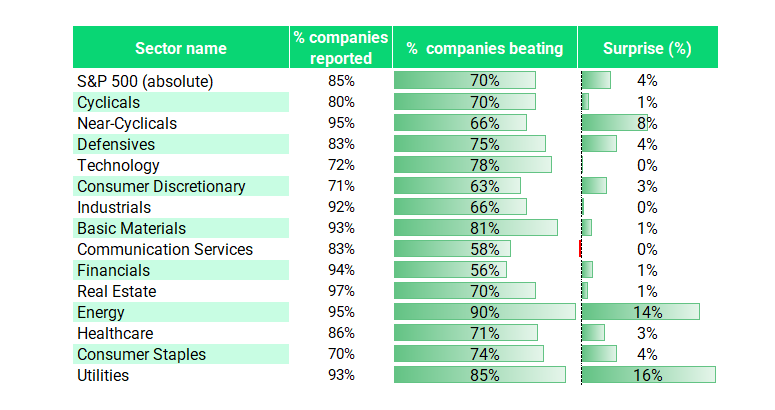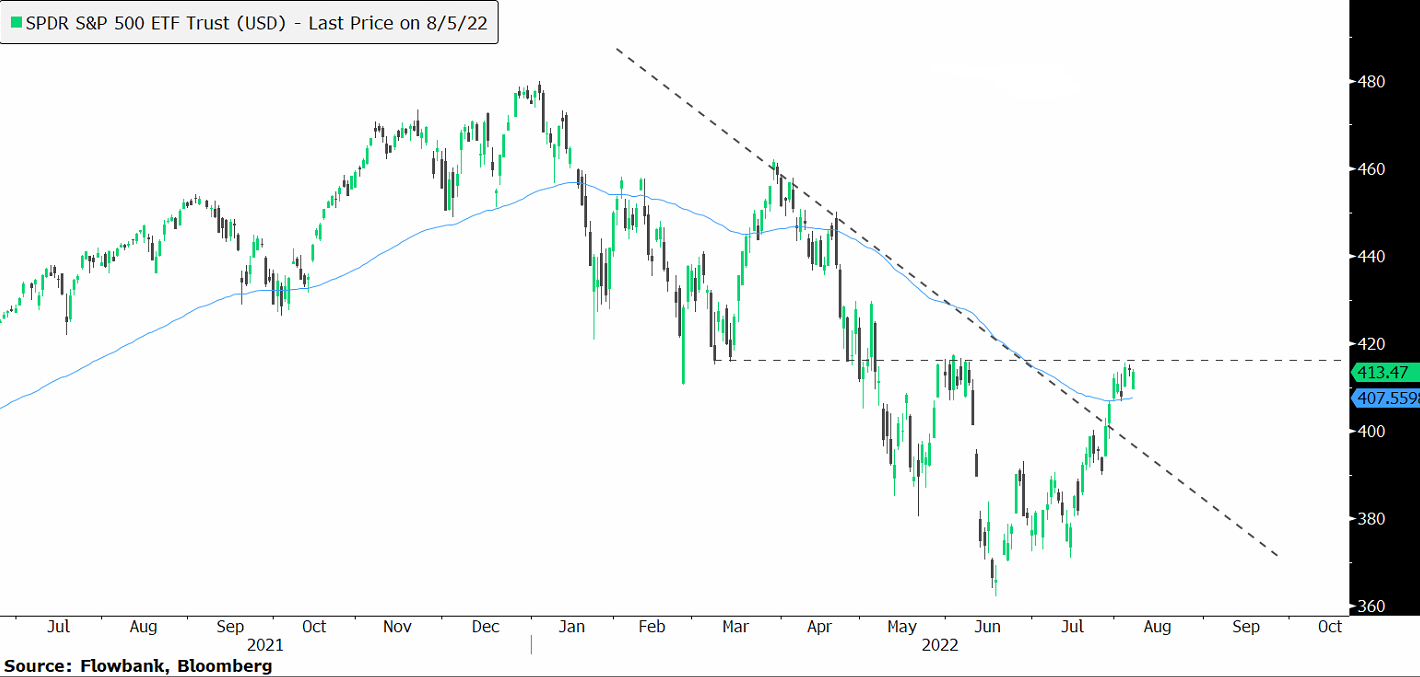More than 80% of the S&P 500 index's companies have reported second-quarter results so far, and despite fewer earnings beats than last year, stocks are still on average 13% higher since their June lows. Why are investors cheering second-quarter news?
Glass half empty or half full?
Investors came into earning season with a glass half empty mindset, predisposed to think negatively. The worry was that high inflation, a strong dollar, and a slowing economy would lead to weak earnings. Many expected second-quarter earnings to be the time companies would dump all their bad news at once.
Yet, even if companies aren’t topping expectations on earnings by a record margin as they did in 2021, investors are still rewarding companies that simply met expectations and didn’t cut forward guidance. ‘Better than feared’ is key this quarter.

While overall demand remains healthy, supply chain challenges have remained one of the more prominent themes of this earnings season, with virtually every company mentioning it, mostly as a drag on earnings. Companies are forced to rethink, optimise, and move production facilities closer to customers.
Another theme is the degree to which companies are aggressively ramping up prices as firms prove better equipped to offset cost pressures. While there are signs that customers are starting to shop less, to confirm pre-earnings concerns, those who continue to shop are spending more as prices rise. UPS saw revenue rise thanks to an 11.9% increase in prices despite a 4% drop in daily package volume. There are many similar examples of how consumers are getting squeezed by inflation, rising rates, and other macroeconomic pressures, pointing to the financial health of subprime and affluent consumers getting bifurcated.
And lastly, early COVID beneficiaries that thought that the pandemic would drive a dramatic, lasting acceleration in their business trends had to walk back ambitious growth plans. From Shopify to PayPal and Robinhood, all announced that they would be embarking on cost-cutting plans. This was rather well-received by investors.
Far from perfect, but improving
The environment is far from perfect. Overall margins grew less than revenue, implying companies were not able to pass all their cost increases onto their customers. As such, the wait continues for material improvement in the margin outlook. Without improvement in the economic outlook or material reductions to operating spending, margins may remain under pressure. And regarding revenue and earnings estimates, while analysts are still optimistic for the second half of this year, they are becoming less so about the outlook for 2023, with the average estimate being revised down by 2% to 5%. The primary reason is inflation, which has caused the Federal Reserve to lift its policy interest rate aggressively to reduce demand.
Nonetheless, markets are starting to see some light at the end of the tunnel on the inflation side. Elon Musk, chief executive officer of Tesla, said the company’s commodity and component costs are trending downward over the next six months. Oil and global food prices are also starting to roll over after concerns over supplies of grains and vegetable oils eased as Ukraine moved towards restarting exports; the United Nations Index of world food costs plunged nearly 9% in July. For these reasons, markets seem more confident to believe that the global economy could be past peak inflation.
What now for the stock market?
In their collective wisdom, global financial markets had decided to interpret the Federal Reserve’s recent decision to abandon forward guidance as a dovish turn. Long-dated US Treasuries found interest. The US dollar’s rapid rise came to halt. And equities soared, with the S&P500 close to challenging a crucial trend line.
However, Friday's stronger-than-expected jobs report immediately put doubt on the plausibility of a more neutral Fed stance and sparked more talk of a 75 basis point rate hike in September.
While chances for such a move doubled from 33% on Thursday to 60% last Friday, it is important to highlight that the Fed’s decision will largely depend on inflation dynamics and not solely on jobs data. As long as the month-on-month inflation rate isn’t accelerating, the Fed won’t need to raise rates aggressively, reducing the risk of a hard landing (recession). Therefore, inflation readings this week and next will be closely watched. And in the meantime, stock prices will continue to reflect the state of an economy that is still holding up well.

Takeaway
Our observation is that investors concluded that, based on corporate earnings, there is no reason to believe we are in a recession today or likely to be in one this year. The labour market is still firing on all cylinders and second-quarter earnings show double digits sales growth thanks to healthy consumer spending. Profit margins did deteriorate this quarter, but this shouldn’t be a big surprise as we are coming down from historical highs. Nonetheless, this will be an important trend to continue monitoring in the months ahead. And while inflation is squeezing customers’ wallets, commodities prices and inflation expectation indicators are starting to form a downward trend. This should help to take off pressure from lower-income consumers.




